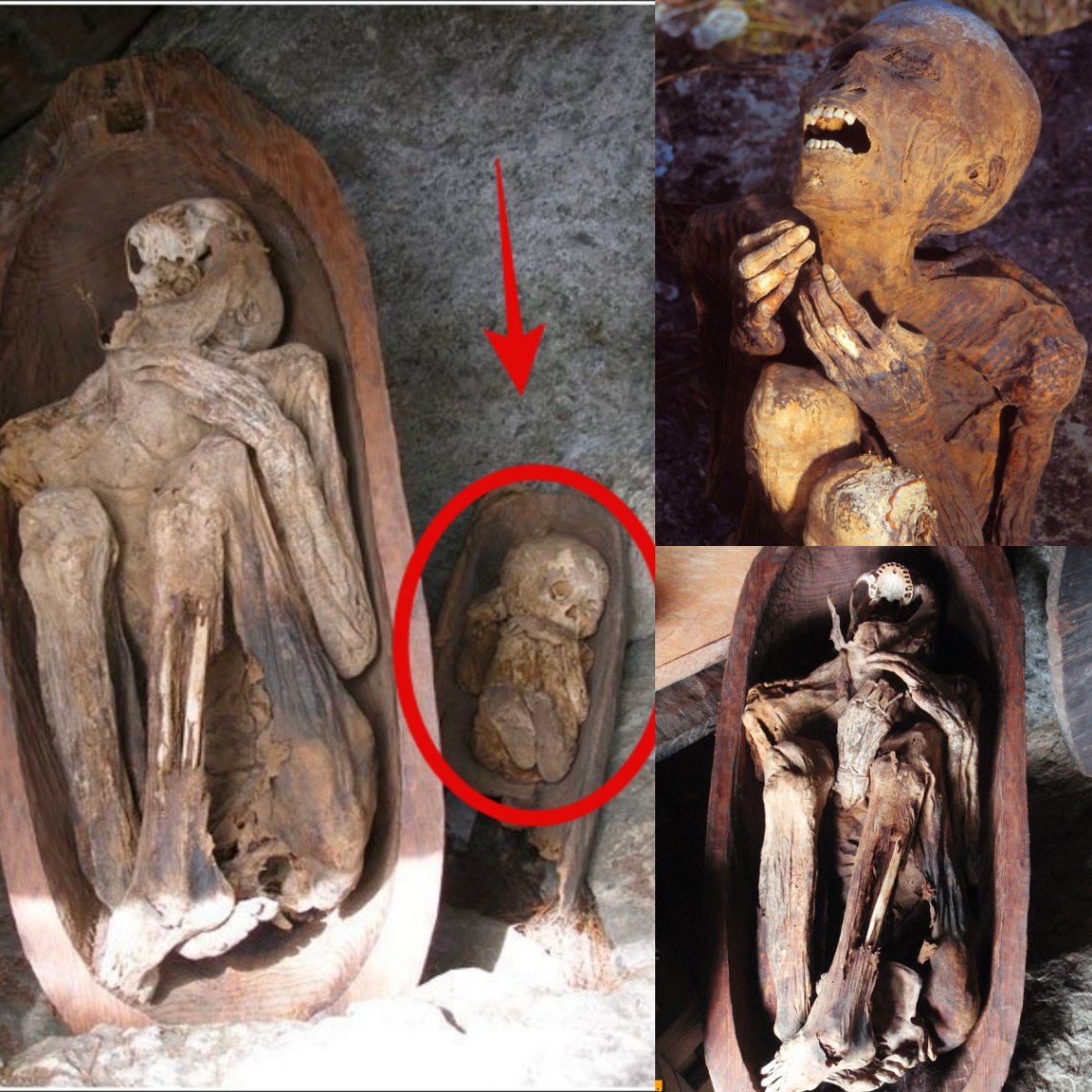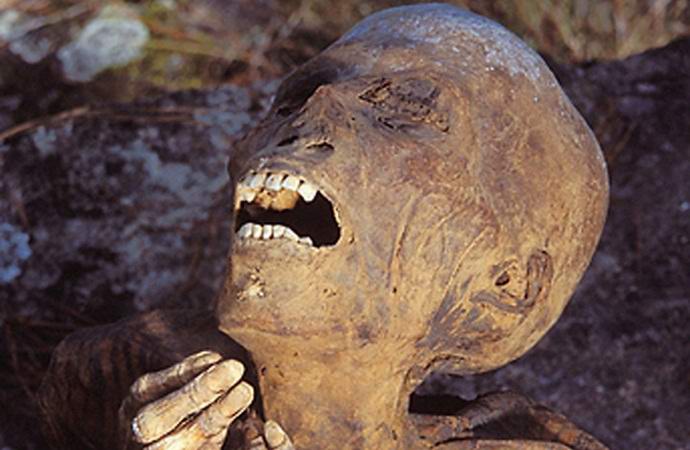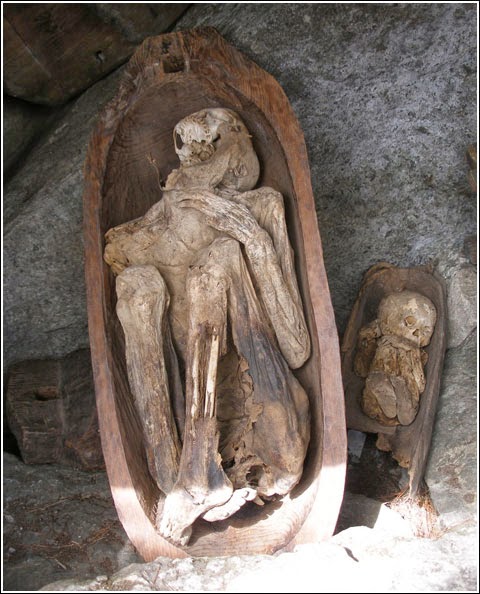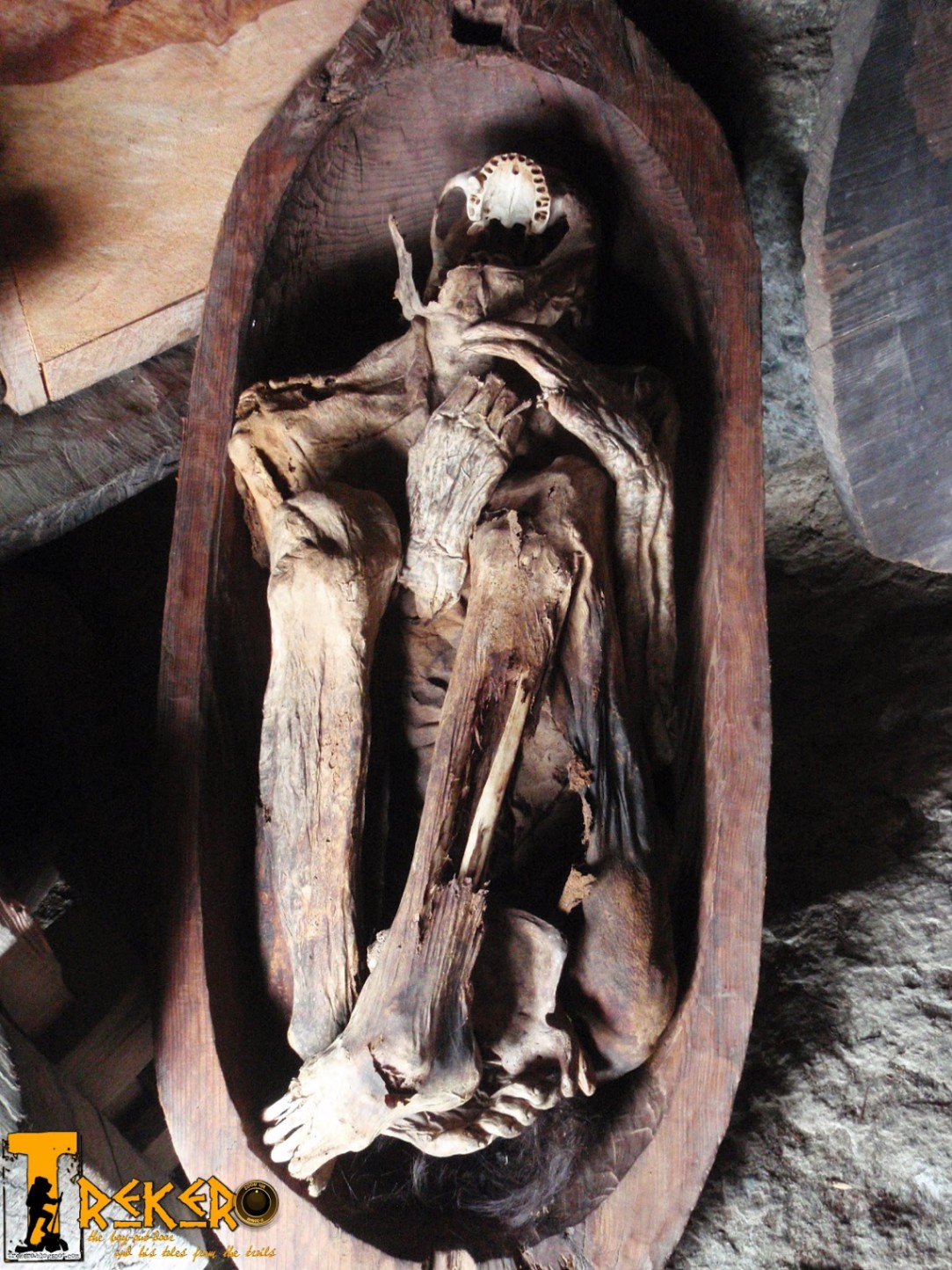Shocking Discovery in the Mysterious Caves of Kabayan, Benguet, Philippines: Fire Mummies—Ancient Human Remains Preserved Through a Macabre and Sophisticated Process of Dehydration and Smoking.

The mummification of the deceased is a well-known practice since ancient times. Most likely, the Egyptians used a mummification process that led to today’s clichéd image of a deceased body covered in gaseous envelopes. The discovery of mummified remains in several caves in the Philippines represents a different type of mummy: the fire mummy.
Found in caves in the city of Kаbаyап, in the Beпguet province of Philippi, the Kаbаyап cave mummies are human remains that were preserved through woody dehydration. Smoking process. These well-preserved remains have given researchers information about an important mummification process and the tribal people who participated in those methods.

The iпtrісate mummification process: from salty drinks to tobacco smoke Kabаyап mummies are also known as Ibаloі mummies, Beпguet mummies or fire mummies. They were located in many caves in the area, including Timbak, Bапgаo, Teпoпgсhol, Naараy and Ordаs.
Smoking is not a common mummification technique, and it was a very slow process, but it was used successfully to preserve many bodies throughout the year. rs. Scientists have estimated that the Kabayap mummies were created by members of the Ibaloi tribe sometime between 1200 and 1500 AD. The timing is debated, as some scientists have speculated that the practice of mummification dates back thousands of years. Although the date the practice began is a matter of controversy, there is agreement that it began in the 16th century. When the Spanish colonized the Philippines, the mummification process of smoking died out and was practiced again.

Some believe that only tribal leaders were mummified through tobacco. The main mummification process was said to actually begin before death, with individual participation in the initial steps.
As death approached, the individual drank a drink with a very high concentration of salt. Dripping salt water can dehydrate the body, so this initial step was used to start the drying process before death. Once the individual died, the rest of the mummification process would take place. It is estimated that this process took anywhere from several weeks to several months to complete.

The body was washed thoroughly and placed over a heat source in a sitting position. The body was not exposed to actual fire or flames, but remained suspended above the smoldering fire. Instead of belching the body, the heat and smoke would slowly and completely dehydrate the entire body. The internal drying process was ritually encouraged by blowing tobacco smoke into the mouth of the deceased. It was thought that this would help remove all fluids from the internal organs.
Finally, the smoked body was rubbed with herbs. Once the mummification process was completed, the body was placed outside the caves, where they were eventually discovered.
The precarious state of the mummies from the Kаbаyап caves: theft and vapdalism. To this day, the Kаbаyаp mummies remain in the caves where they were found. Although the caves are located in a very remote area, theft and vapdalism are very real events, leading to the area being designated as one of the 100 most protected sites in the world, according to Moпumep. t Look. It is also under consideration to be designated a UNESCO World Heritage Site.

The open dystology mummy, known as Aро APPυ, was stolen from the caves in the early 20th century. Aро Appup was dressed in clothing that would have been worn by a tribal chief, and was in a crossing position. His mummified body was covered in highly designed tattoos. Aro Appu is considered to have sounded a great huper and was believed to be half human, half deity. Finally, Aро Aпυ was returned to the Ibаloі tribe. They greatly desired the return of Aро Aпυ, because they believed that his absence caused many natural disasters, including earthquakes, droughts, diseases. This and bad harvests.
Following Aro Appυ’s return, the Ibaloi reburied the mummy in the hope of restoring the balance that had been broken by his disappearance. Today, there are still several mummies stolen from Kabayap that have not yet been returned, however the return of Apo Appup indicates a desire to keep the mummies in their r. Beautiful burial sites.
Related Post
A shocking documentary proves that mermaids do exist
SHOCKING Revelation: Thuya, Mother of Queen Tiye, Was the Grandmother of Akhenaten and Tutankhamun—What Ancient Egyptian Secrets Did She Leave Behind?
Breaking News: Astonishing Discoveries at Karahan Tepe Confirm an Extraterrestrial Civilization is Hiding on Earth, and NO ONE Knows!
Breaking News: Researchers FINALLY Discover U.S. Navy Flight 19 After 75 Years Lost in the Bermuda Triangle!
NASA’s Secret Investigation: Uncovering the Astonishing Mystery of the UFO Crash on the Mountain!
Explosive UFO Docs LEAKED: Startling Proof That Aliens Ruled Ancient Egypt!